13 Foods That Are High in Carbohydrates
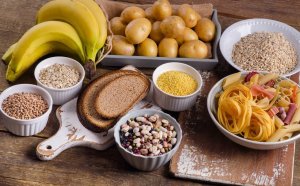

Written and verified by the pedagogue in physical education and nutritionist Elisa Morales Lupayante
Have you ever wondered what the most common foods that are high in carbohydrates? Continue reading to find out.
Most people tend to think that carbohydrates are your worst enemy when it comes to losing weight or staying in shape. But this is completely false. Carbohydrates are macronutrients that work as fuel for the body to work correctly.
Types of carbohydrates
There are two types of carbohydrates: the good kind and the bad kind. Junk food, hydrogenated oil, and refined sugars make up some of the bad ones according to a study by the National University of Colombia. It’s really easy to see why: their nutritional value is either poor or zero.
In turn, fruit, vegetables, and natural sweeteners form part of the good carbohydrate group. Thus, you don’t have to stop eating carbs entirely. Instead, balance the amount of good ones so as to benefit from their nutritional value.
13 foods that are high in carbohydrates
1. Potatoes
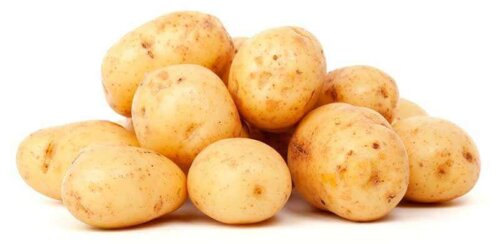
This is one of the most accessible and cheap foods available and you can’t avoid including it in your diet. However, you should leave all fried foods to one side, i.e. don’t use oil.
The best way to eat potatoes is to cook them in the oven. This way you preserve the recommended amount of carbohydrates in a natural way.
Each 100 grams of potato is equivalent to 27 grams of carbohydrates, an ideal amount for accompanying it with other foods. Potatoes are also a source of vitamin B6, vitamin C, and potassium.
2. Bananas are high in carbohydrates
Most fruits are sources of essential macronutrients for the body, and bananas are no exception. It’s best to eat a green banana before exercise and then a ripe one afterwards.
This is because green bananas are made up of starch and it releases energy gradually (which is ideal for resistance training). It’s also good for the digestive system, according to this study conducted by the University of Brasilia. In turn, the ripe one is rich in sucrose, which contributes to the body’s energy recharge and improves cognitive functions, according to research by the University of Murcia.
It is worth noting that green bananas contain resistant starch that acts as soluble fiber. This, thanks to pectin, can moderate cholesterol levels (according to this study by the University of Lima) and reduce appetite.
3. Oats
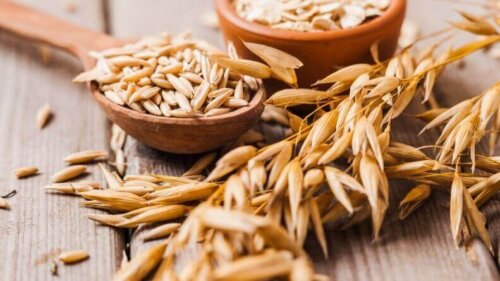
Although you may not believe it, oats are one of the most beneficial foods rich in carbohydrates that exist. They’re also rich in fiber. They provide 50 grams of carbohydrates per cup. And the best thing is that you can accompany them with:
- Honey
- Milk
- Strawberries
- Yogurt
- Bananas
- Berries
- Nuts and Seeds (like chia)
Oats are energizing and satisfying. Furthermore, they’re a common ingredient in various breakfasts and snacks. Best of all, they’re low in calories and provide important nutrients such as antioxidants, vitamins and minerals.
4. Pasta
The majority of elite sportspeople regularly consume certain amounts of pasta in the days leading up to a competition. This is because regular pasta has a higher glycemic index than rice, which means it provides more energy.
As a result, pasta is another highly recommended food rich in carbohydrates.
5. Rice
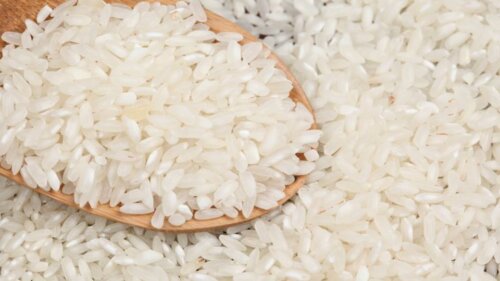
You can accompany it with meat, fish, or eggs, and a small portion of vegetables. The best way is to cook it with as little oil as possible and eat no more than a cup per day.
Moreover, brown rice is also a food rich in carbohydrates, although in a lower proportion. This cereal contains only 25.8 grams of carbohydrates per 100 grams of product.
6. Tapioca is high in carbohydrates
This food is a tuber and is a healthy source of carbohydrates because of its high starch content. Therefore, tapioca is low in cholesterol.
Just 100 grams of tapioca contains 22 grams of carbohydrates. This is one of the foods rich in carbohydrate which is also low in sodium and doesn’t contain sugar. For this reason, many nutritionists recommend it in diet plans.
7. Bread
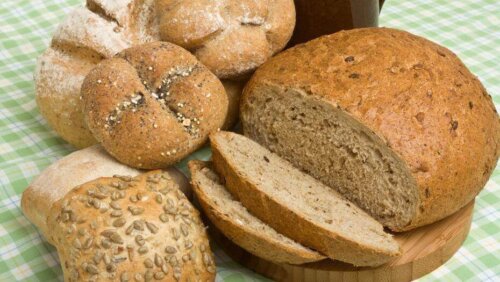
Bread is a food that’s rich in good carbohydrates when it’s made from bran fiber, which increases the cud. Bran is a nutrient that contains proteins, fats, minerals and also water.
8. Whole-grain cereals
Whole-grain cereals are loaded with carbohydrates with a low glycemic index, which work as the fuel needed to carry out a variety of activities.
Almost all cereals have a high fibre content, which is essential for regular intestinal transit, and they also make you feel fuller for longer as well as promoting and prolonging the state of satiety, according to this study conducted by Tufts University in the USA. Their consumption helps regulate your metabolism.
9. Flours
All flours are rich in carbohydrates and it’s important to be aware that these products come from cereals, which contain a large amount of carbohydrates and fiber.
Despite popular belief, corn meal contains lots of carbohydrates. In fact, it contains 75.3 grams of the macronutrient in question per 100 grams of flour. This product is a staple in Latin American cuisine.
In second and third position are wheat flour and whole wheat rye flour respectively. Thus, it’s better to opt for foods made with rye in any low calorie diet. In fact, a study establishes that whole wheat bread can be made with rye flour, as long as it’s of good quality.
10. Sweet potatoes
These tubers are some of the highest in carbohydrate content — about 20 grams per every 100 grams. They’re also rich in slow digesting starch sugar and thus, a source of long-term energy.
As if that wasn’t enough, sweet potatoes also contain a small amount of fiber, proteins, vitamins and minerals. Thus, they’re ideal at lunchtime. It’s always preferable to parboil or bake the vegetable to minimize the amount of calories you take.
11. Corn flakes are high in carbohydrates
These are easily the most carbohydrate-rich food on this list — about 80%. Despite all this, the caloric intake remains low, since 100 grams of corn flakes will only provide an amount similar to 340 kilocalories.
Thus, this type of cereal can be a breakfast option that offers a considerable amount of energy when you don’t have time to cook. However, it’s important not to overindulge on these products to maintain a healthy weight and be well nourished.
12. Dairy and its derivatives
Dairy is a source of simple natural sugars. In fact, milk contains 5 percent of carbohydrates in the form of lactose, a disaccharide that’s easily broken down in the intestine into simpler sugars. The carbs in milk and dairy products are useful for brain and musculoskeletal development, as well as for the maintenance of healthy gut bacteria in adults.
Read about The Risks of Adhering to a High-Protein Diet
13. Lentils and chickpeas
Generally, cooked lentils and chickpeas are common in sautéed foods, nuggets, and creams. They’re rich in good proteins and carbohydrates. In this respect, a portion of 100 grams of lentils provides 93 calories and 16 grams of carbs. Meanwhile, chickpeas provide up to 17 grams of complex carbohydrates and 5 grams of fiber.
We hope this article has helped you to demystify carbohydrates. Certainly, you must be aware of the different options available to you. As you can see, there’s a wide range of options to choose from for a rich well-balanced exciting diet.
All cited sources were thoroughly reviewed by our team to ensure their quality, reliability, currency, and validity. The bibliography of this article was considered reliable and of academic or scientific accuracy.
- Federación Española de Sociedades de Nutrición. (2018). Legumbres: tu opción saludable para todo el año [Díptico]. https://www.fesnad.org/resources/files/DNN/2018/dipticoDNN2018_A5_AF.PDF
- MedlinePlus. (19 de agosto de 2021). Carbohidratos en la dieta. Biblioteca Nacional de Medicina de Estados Unidos. Consultado el 22 de setiembre de 2023. https://medlineplus.gov/spanish/carbohydrates.html
- Ruan, Y., & Fincher, G. B. (2017). Carbohydrates. En B. Thomas, D. J. Murphy & B. G. Murray (Eds.), Encyclopedia of Applied Plant Sciences (pp. 67–71). Academic Press. https://www.sciencedirect.com/science/article/abs/pii/B9780123948076001556?via%3Dihub
- U. S. Department of Agriculture & U. S. Department of Health and Human Services. (2020). Dietary Guidelines for Americans, 2020-2025. https://www.dietaryguidelines.gov/resources/2020-2025-dietary-guidelines-online-materials
- U. S. Department of Agriculture. (1 de abril de 2019). Dates, medjool. FoodData Central Search Results. https://fdc.nal.usda.gov/fdc-app.html#/food-details/168191/nutrients
- U. S. Department of Agriculture. (1 de abril de 2019). Mangos, raw. FoodData Central Search Results. https://fdc.nal.usda.gov/fdc-app.html#/food-details/169910/nutrients
- U. S. Department of Agriculture. (1 de abril de 2019). Milk, whole. FoodData Central Search Results. https://fdc.nal.usda.gov/fdc-app.html#/food-details/1097512/nutrients
- U. S. Department of Agriculture. (1 de abril de 2019). Peas, green, raw. FoodData Central Search Results. https://fdc.nal.usda.gov/fdc-app.html#/food-details/170419/nutrients
- U. S. Department of Agriculture. (1 de abril de 2019). Sweet potato, raw, unprepared (Includes foods for USDA’s Food Distribution Program). FoodData Central Search Results. https://fdc.nal.usda.gov/fdc-app.html#/food-details/168482/nutrients
- U. S. Department of Agriculture. (1 de abril de 2019). Yogurt, plain, whole milk. FoodData Central Search Results. https://fdc.nal.usda.gov/fdc-app.html#/food-details/171284/nutrients
This text is provided for informational purposes only and does not replace consultation with a professional. If in doubt, consult your specialist.








